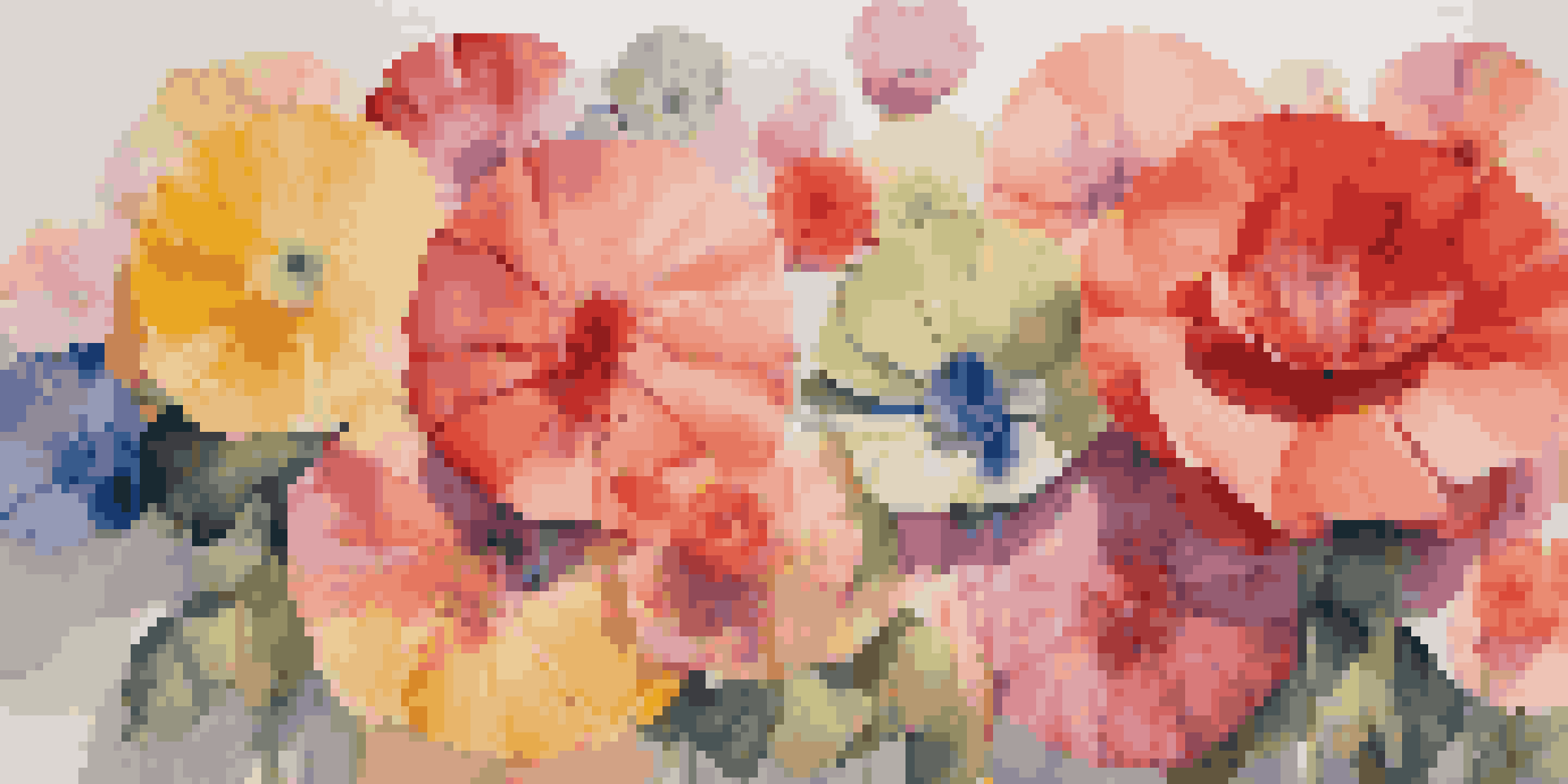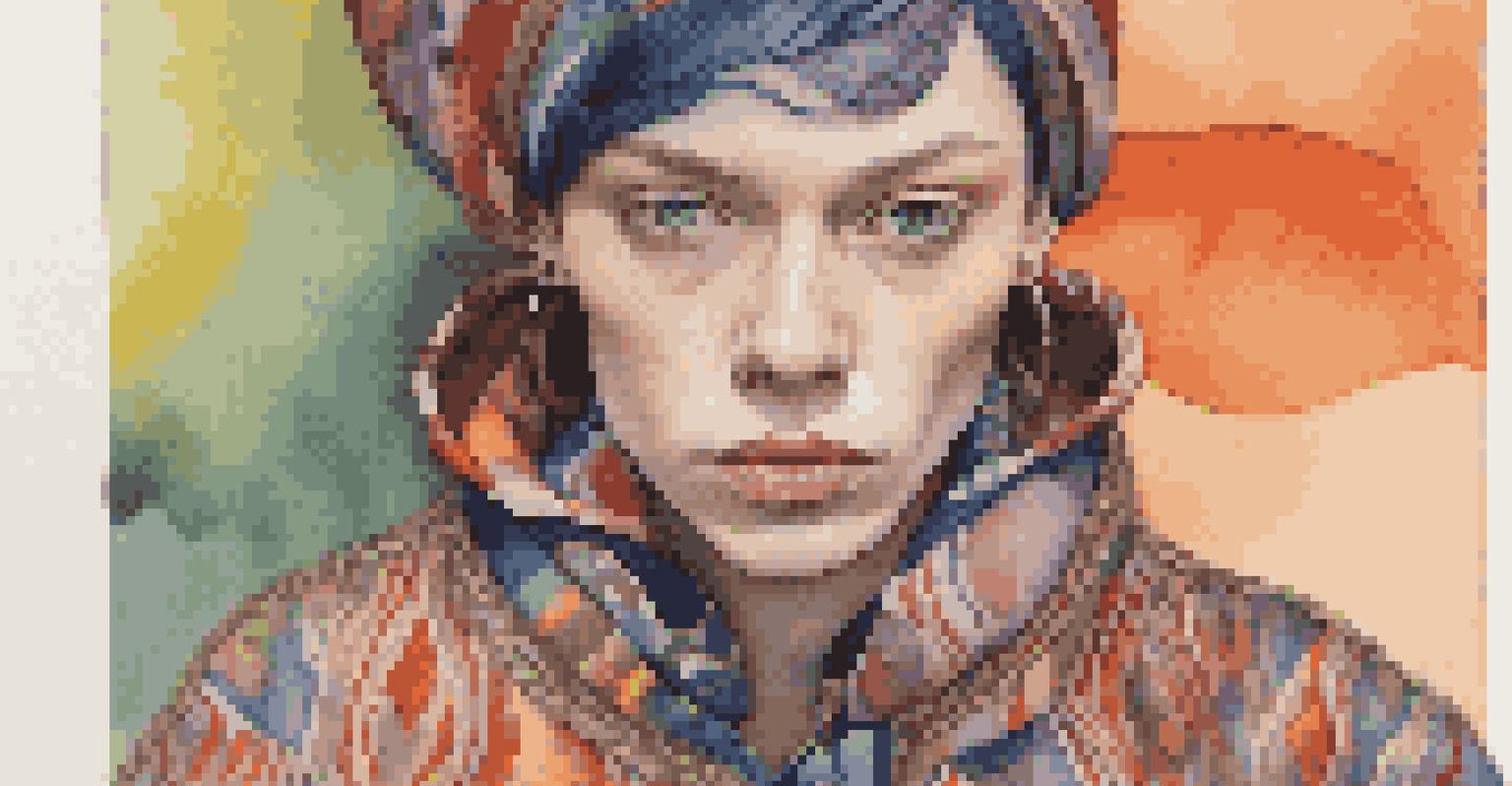Exploring Gender Identity Through Fashion and Art

The Intersection of Fashion, Art, and Gender Identity
Fashion and art have long been powerful mediums for self-expression, especially when it comes to gender identity. They allow individuals to communicate who they are without saying a word, challenging societal norms and expectations. As we navigate a world that increasingly embraces diversity, the roles of these two forms become even more significant.
Fashion is the armor to survive the reality of everyday life.
In the realm of fashion, clothing choices can reflect a person’s identity, beliefs, and even their emotional state. For example, a flowing dress might resonate with someone who identifies as non-binary, while tailored suits can represent confidence and authority for others. This fluidity in fashion showcases the complexity of gender, allowing for a spectrum of expression.
Similarly, art often captures and questions the essence of gender identity. From provocative installations to thought-provoking paintings, artists use their work to explore themes of masculinity, femininity, and everything in between. Through the lens of art, viewers are invited to reflect on their own perceptions of gender, fostering deeper understanding and acceptance.
Historical Perspectives on Gender and Fashion
Historically, fashion has played a pivotal role in defining and reinforcing gender roles. For centuries, clothing was strictly categorized—certain styles deemed appropriate for men and others for women. This rigid structure often dictated how individuals expressed their identities, sometimes leading to internal conflict for those who felt misaligned with these societal expectations.

However, as social movements progressed, the fashion landscape began to shift. The 20th century saw the rise of androgyny in fashion, challenging traditional gender norms. Icons like David Bowie and Grace Jones blurred the lines, showcasing that fashion could transcend gender boundaries and promote a more inclusive understanding of identity.
Fashion Reflects Gender Identity
Fashion serves as a vital form of self-expression, allowing individuals to communicate their gender identity and challenge societal norms.
Today, we’re witnessing a resurgence of these ideas, with many designers embracing gender-neutral collections. This shift not only reflects contemporary culture but also empowers individuals to dress in ways that resonate with their identities, creating a more inclusive space within the fashion industry.
The Role of Art in Challenging Gender Norms
Art has the unique ability to confront and deconstruct established gender norms, offering an avenue for dialogue and reflection. Artists often use their platforms to highlight issues surrounding gender identity, prompting audiences to reconsider preconceived notions. This process can be both enlightening and transformative, encouraging viewers to engage with their own biases.
Art is not what you see, but what you make others see.
For instance, performance art often challenges traditional gender expressions by allowing artists to embody various identities in real-time. These performances can provoke thought, spark conversations, and foster empathy among diverse audiences. They serve as a reminder that gender is not a fixed concept but rather a fluid spectrum.
Moreover, contemporary art installations frequently incorporate interactive elements, inviting participants to explore and express their own identities. By breaking down barriers and encouraging participation, these artworks create a sense of community and understanding, reinforcing the idea that our identities are interconnected.
Fashion as a Medium for Self-Expression
For many, fashion is not just about trends; it’s a vital form of self-expression. Choosing what to wear can be a deeply personal choice, reflecting one’s mood, identity, and even political beliefs. In this way, clothing becomes a powerful tool for individuals to articulate their gender identity and challenge societal expectations.
Consider the use of color and texture in fashion—these elements can evoke emotions and embody identities. For example, vibrant colors and bold patterns might represent joy and confidence, while minimalist styles can reflect a more introspective identity. Each choice tells a story, allowing individuals to share their journeys through visual means.
Art Challenges Gender Norms
Art provides a platform for dialogue and reflection, encouraging audiences to rethink traditional views on gender identity.
Furthermore, social media platforms have amplified the voices of those exploring their gender identities through fashion. As people share their personal styles online, they create a global dialogue about what it means to express oneself. This visibility fosters a sense of belonging and encourages others to embrace their unique identities.
The Impact of Gender on Fashion Industry Trends
The fashion industry is continually evolving, influenced heavily by cultural shifts surrounding gender identity. Designers are increasingly recognizing the importance of inclusivity, leading to a rise in unisex and gender-fluid clothing lines. This trend not only caters to diverse consumers but also challenges traditional retail practices.
Moreover, the representation of gender-diverse models in advertising campaigns is becoming more commonplace. By showcasing a range of identities, brands can appeal to a broader audience while also promoting acceptance and visibility. This shift reflects a growing understanding that fashion should celebrate diversity rather than conform to outdated norms.
As consumers demand more inclusive options, the fashion industry is responding with innovative designs and marketing strategies. This evolution not only supports those exploring their gender identities but also encourages society as a whole to embrace and celebrate differences.
Art and Fashion: A Collaborative Exploration of Identity
Art and fashion often intersect, with artists collaborating with designers to create pieces that challenge and expand our understanding of gender identity. These collaborations can result in powerful statements that resonate with audiences, merging aesthetic beauty with social commentary. When fashion meets art, the dialogue around identity becomes richer and more complex.
Consider the works of contemporary artists like Yayoi Kusama, whose bold patterns and vibrant colors have influenced fashion collections worldwide. Such collaborations highlight how art can inspire fashion, and vice versa, creating a dynamic exchange that reflects contemporary culture. These partnerships encourage a deeper exploration of identity through both mediums.
Inclusivity Drives Fashion Trends
The fashion industry is evolving towards inclusivity, with a rise in gender-neutral collections and diverse representation in advertising.
Ultimately, the fusion of art and fashion opens new avenues for expression, allowing individuals to engage with their identities in diverse ways. By celebrating this collaboration, we can foster a greater appreciation for the intricate relationship between creativity and self-exploration.
Future Trends in Gender Identity, Fashion, and Art
As we look toward the future, the conversation around gender identity, fashion, and art is likely to continue evolving. With increasing awareness and acceptance of diverse identities, we can expect to see even more innovative approaches in both fields. This evolution will not only shape individual expression but also influence broader cultural narratives.
For instance, advancements in technology may pave the way for virtual fashion shows and digital art installations that challenge traditional notions of gender. These platforms could allow for even greater experimentation and expression, providing a space for individuals to explore and showcase their identities without boundaries.

Moreover, as conversations about inclusivity become more mainstream, we can anticipate a growing emphasis on sustainability within fashion and art. This focus on ethical practices will pair beautifully with gender exploration, as creators seek to produce work that reflects their values while celebrating the rich tapestry of human identity.